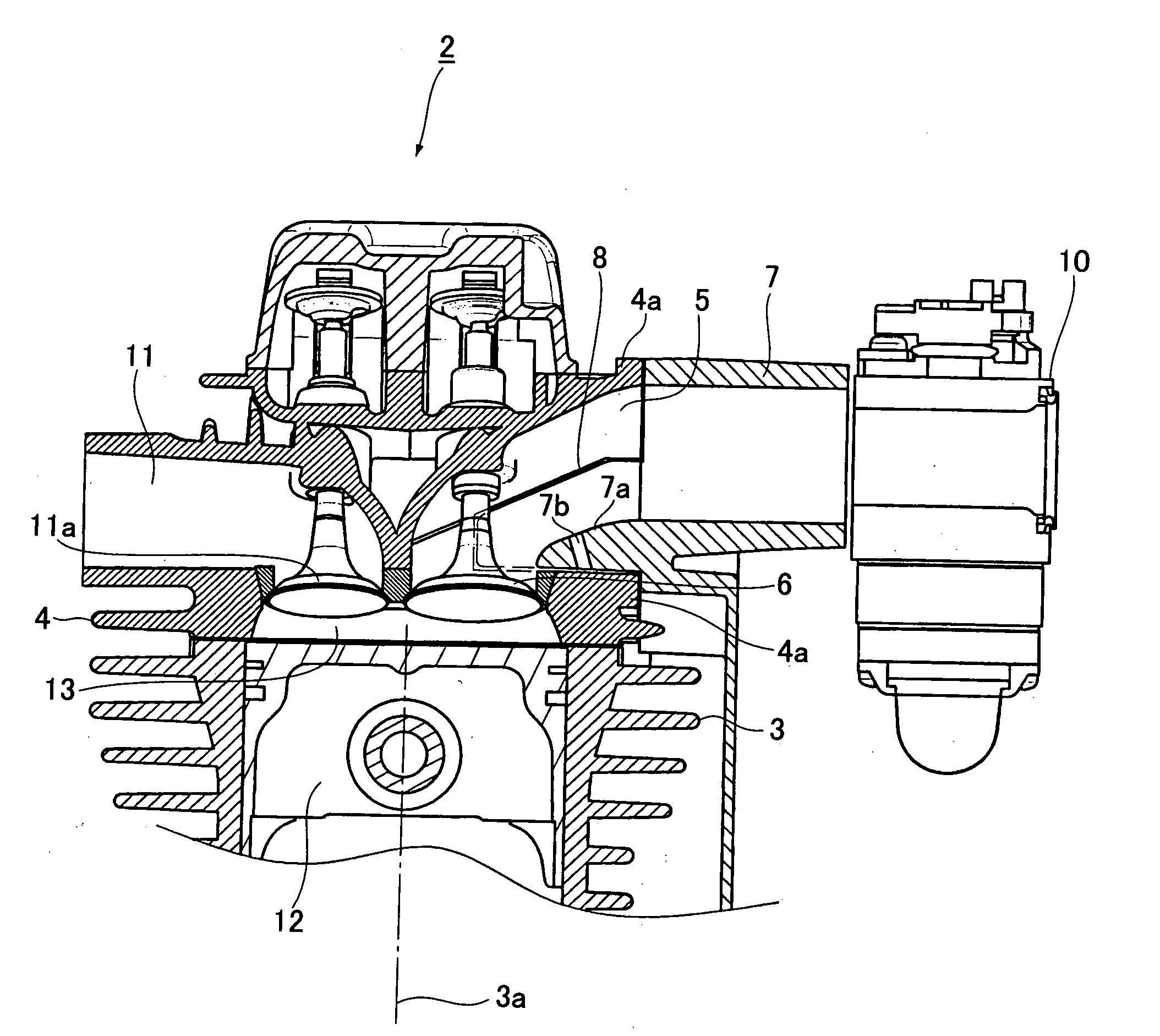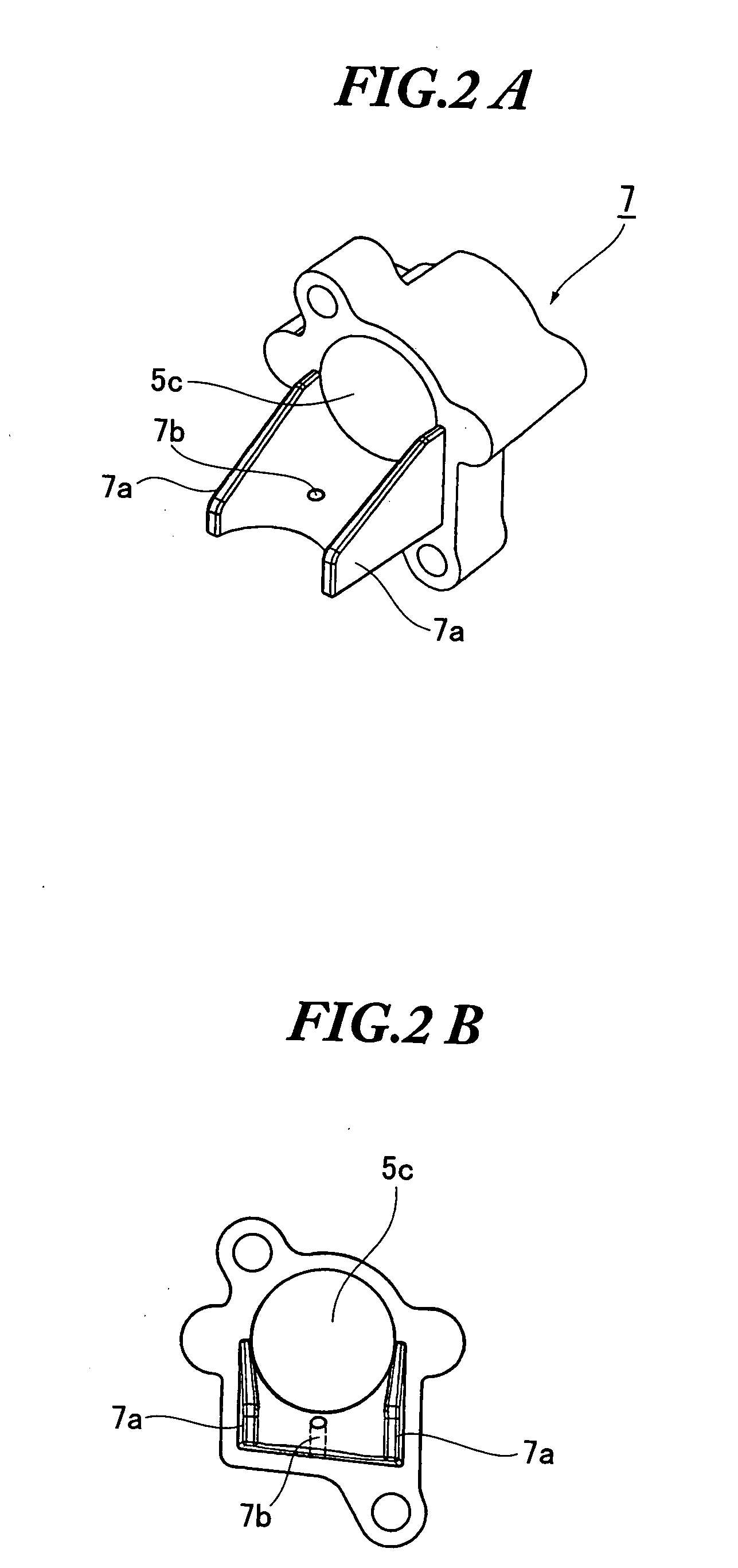Intake port for 4-cycle engine
- Summary
- Abstract
- Description
- Claims
- Application Information
AI Technical Summary
Benefits of technology
Problems solved by technology
Method used
Image
Examples
Embodiment Construction
[0030]One preferred embodiment of the 4-cycle engine of the present invention will be hereinafter described with reference to the drawings. FIG. 1 is a cross sectional view illustrating relevant parts of the 4-cycle engine according to one embodiment of the present invention; FIG. 2A is a perspective view and FIG. 2B is a front view of a heat insulator used in the embodiment of the invention; FIG. 3 is a cross sectional view illustrating relevant parts of the cylinder head of the 4-cycle engine in accordance with the embodiment of the present invention; FIG. 4 is a cross sectional view taken along the line A-A of FIG. 3; and FIG. 5 illustrates one example of use of the 4-cycle engine in accordance with the embodiment of the invention.
[0031]As shown in FIG. 1, a cylinder head 4 is placed on a top of a cylinder 3 and firmly tightened to the cylinder 3 with bolts or the like. Both of the cylinder 3 and the cylinder head 4 are aluminum alloy die castings. The 4-cycle engine 2 in accorda...
PUM
 Login to View More
Login to View More Abstract
Description
Claims
Application Information
 Login to View More
Login to View More - R&D
- Intellectual Property
- Life Sciences
- Materials
- Tech Scout
- Unparalleled Data Quality
- Higher Quality Content
- 60% Fewer Hallucinations
Browse by: Latest US Patents, China's latest patents, Technical Efficacy Thesaurus, Application Domain, Technology Topic, Popular Technical Reports.
© 2025 PatSnap. All rights reserved.Legal|Privacy policy|Modern Slavery Act Transparency Statement|Sitemap|About US| Contact US: help@patsnap.com



